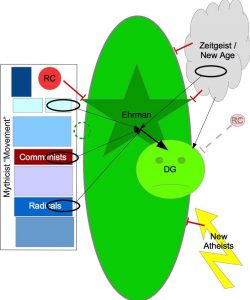Not wanting on a Sunday to spend too much time at one sitting responding to James McGrath’s gaffes I will respond in small segments to his latest “review” of Richard Carrier’s On the Historicity of Jesus on the Bible and Interpretation site. Once I’ve done enough of these I may combine them into a single response and forward to Bible and Interpretation to see if they will post them there.
This post addresses the first “substantive” criticism in McGrath’s latest review:
His [Carrier’s] treatment of myth, and how to determine whether a work is largely or entirely myth, is less satisfactory. Carrier writes,
Characteristics of myth are
(1) strong and meaningful emulation of prior myths (or even of real events);
(2) the presence of historical improbabilities (which are not limited to ‘miracles’ but can include natural events that are very improbable, like amazing coincidences or unrealistic behavior); and
(3) the absence of external corroboration of key (rather than peripheral) elements (because a myth can incorporate real people and places, but the central character or event will still be fictional).
No one of these criteria is sufficient to identify a narrative as mythical. But the presence of all three is conclusive. And the presence of one or two can also be sufficient, when sufficiently telling.
Ignoring Carrier’s point that “no one of these criteria is sufficient to identify a narrative as mythical but the presence of all three is conclusive” McGrath proceeds to “protest” that “no one of these criteria is sufficient to identify a narrative as mythical”. Not only that, but he completely fails to grasp the difference between “emulation” and “similarity“. Continue reading “McGrath’s BI Review of Carrier’s On the Historicity of Jesus, 1″

